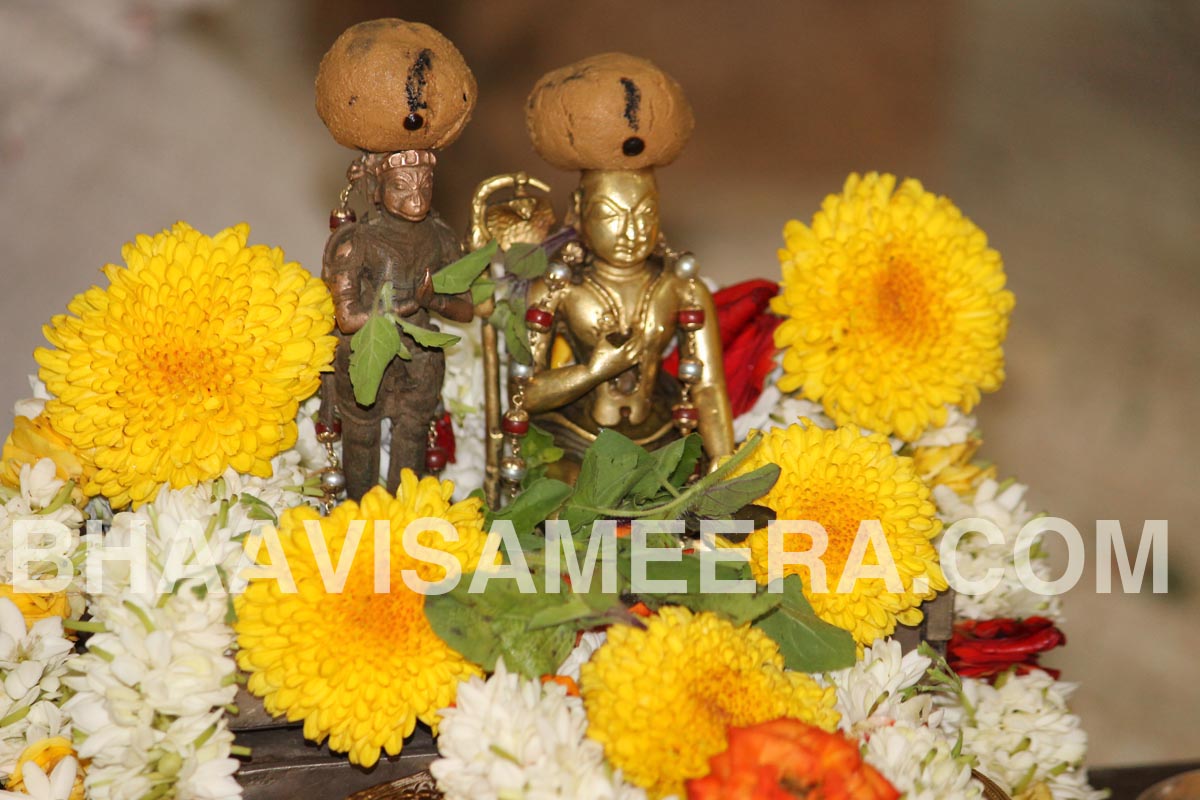Sri Raghunathacharya was the son of Sri Raghavacharya. Sri Raghunathacharyaru, blessed with health and wisdom through the grace of Sri Vadiraja, has meticulously collected and documented the rich history of Sri Vadirajaru, presenting it with profound reverence and insight. His book is titled “VruttaratnaSangraha“. This book consists of 3 sargas and 187 shlokas. It serves not only as a historical narrative but also functions as a stotra.
Even though several aspects from Sri Vadiraja Teerthara life are recorded here, some events are left out while details of some other events have been skipped. Though comprising numerous incidents, it serves as an enlightening indication. Therefore, it can be considered as a spiritually uplifting epic. Sri Raghunathacharya, who was contemporaneous with Vadiraja Teertharu, personally witnessed and vividly described his greatness, yet it is surprising that in his ‘VruttaRatnaSangraha’ book he skipped several well-known incidents. Notably absent from Sri Raghunathacharya’s accounts are Sri Vadiraja Teertha’s UttaraBadari yatra, authorship of ‘Lakshalankara’, philanthropic contributions to the Vijayanagar kingdom, extraordinary events like the gold rain, installation of the Shri Mukhyaprana and Garuda idols at Udupi, the heartfelt gesture of gifting his idol to his mother, transformations in the ‘paryaya’ system at Udupi, and his final paryaya at Sonda.
Despite witnessing the development of Sonda kshetra, including the installation of Sri Trivikrama and the construction of DhavalaGanga, Sri Raghunathacharya’s account omits any mention of the building of Sri Vadirajaru’s brundavana or his entry into it, suggesting that he may have passed away before these events transpired.
VruttaRatnaSangraha – “snanam svalagangayam vadirajasya darshanam… “- The 62nd shloka from the 2nd prabandha remains enigmatic in this context, given that the construction of Dhavalaganga and the installation of the Trivikrama statue both occurred at least 18 years prior to the entry into the brundavana in 1582. Prabandha 3, in shlokas 45, 46, and 47, makes no mention of the brundavana’s mruttike, focusing instead on the transformative effects of using Sri Vadirajara guru’s padamruttika, which strengthened his teeth. As confirmed in 2-74.

